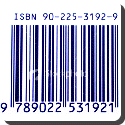 There are hundreds of thousands of publishers across the world, and millions of books get printed every year. Moreover, a book like The Adventures of Sherlock Holmes is a book that has been printed by several publishers. This makes the task of identifying a book very difficult.
There are hundreds of thousands of publishers across the world, and millions of books get printed every year. Moreover, a book like The Adventures of Sherlock Holmes is a book that has been printed by several publishers. This makes the task of identifying a book very difficult.
To overcome the problem of identifying books, publishers have came up with a unique numbering system. For instance, if 50,000 copies of The Adventures of Sherlock Holmes are printed by a publisher at one time (called an edition), all of them are identified by one number code. This number code is like your home address that cannot be shared by anyone else apart from your parents and siblings.
Your address begins with your house number, street, locality, state and ends with a statement of the country where you live. An ISBN book number achieves a similar aim of identifying and tracing a book.
ISBN: a book’s address
If you pick up any book, turn it around you will see a number which looks something like this – ISBN 90-70007-38-5. This is called the ISBN number. Do you know what this means?
ISBN stands for International Standard Book Numbering. It is a numbering system that is used to describe the book. The ISBN number is a 10 digit number, divided into four groups that are separated by a space or a hyphen.
The first part of the ISBN identifies the country and is called the Group Identifier. The Group Identifier may consist of up to 5 digits. In the above example, 90 specifies the country.
The second part is called the Publisher Prefix. The Publisher Prefix is used to identify the publisher of the book. The publisher prefix may contain up to seven digits. In the above example, 70002 specifies the publsiher.
The third part of the ISBN identifies the title and the edition of the book and so is called the Title Identifier. A title identifier may consist of up to six digits. Book publishers often come out with newer and updated versions of earlier books. Since you can have the same book from the same publisher but with different editions, the Title Identifier helps to differentiate between them.
The fourth and the final part of the ISBN is called the Check digit. It is a single digit (from 0 to 9) that is used to check whether the given ISBN number is correct or wrong. Since all ISBN numbers are allocated by the respective countries’ ISBN agency, no two books can have the same ISBN number.
The check digit is used to check whether an ISBN number is incorrect. If it is, this means that the book is a duplicate or a version printed illegally.
The ISBN numbering systems helps book stores and book publishers to handle, categorise, store and identify books easily.
 Kids Portal For Parents India Kids Network
Kids Portal For Parents India Kids Network






